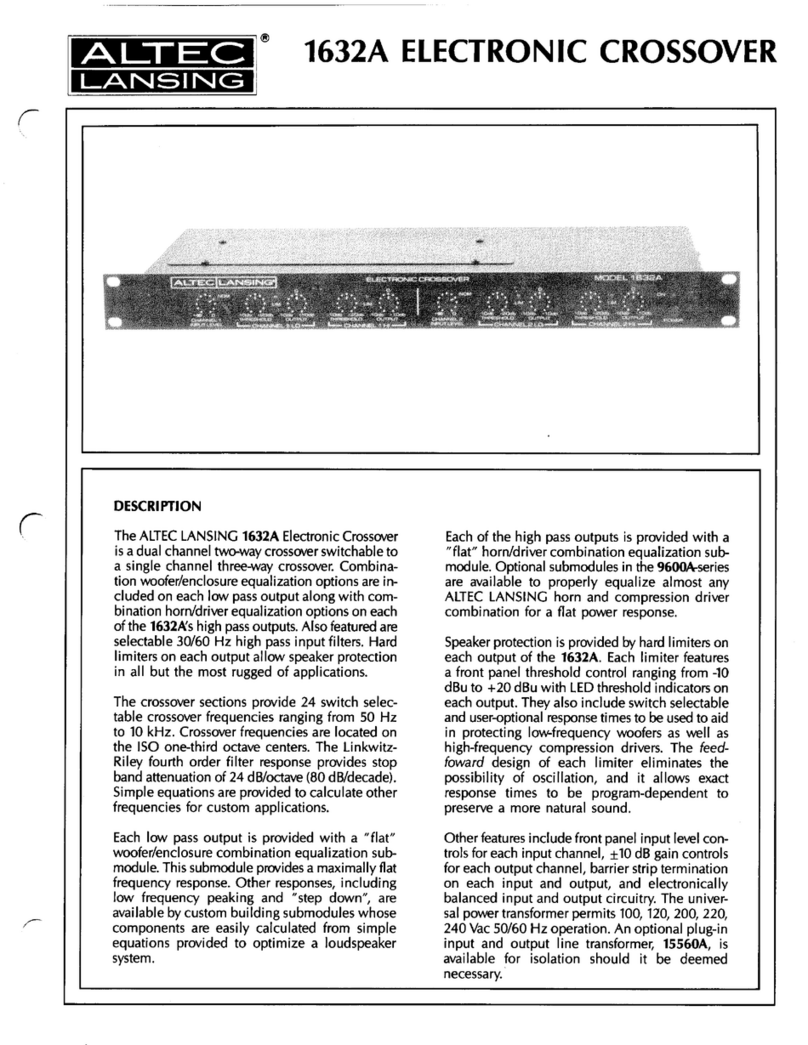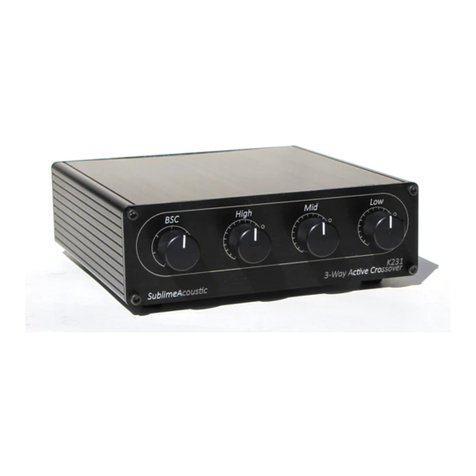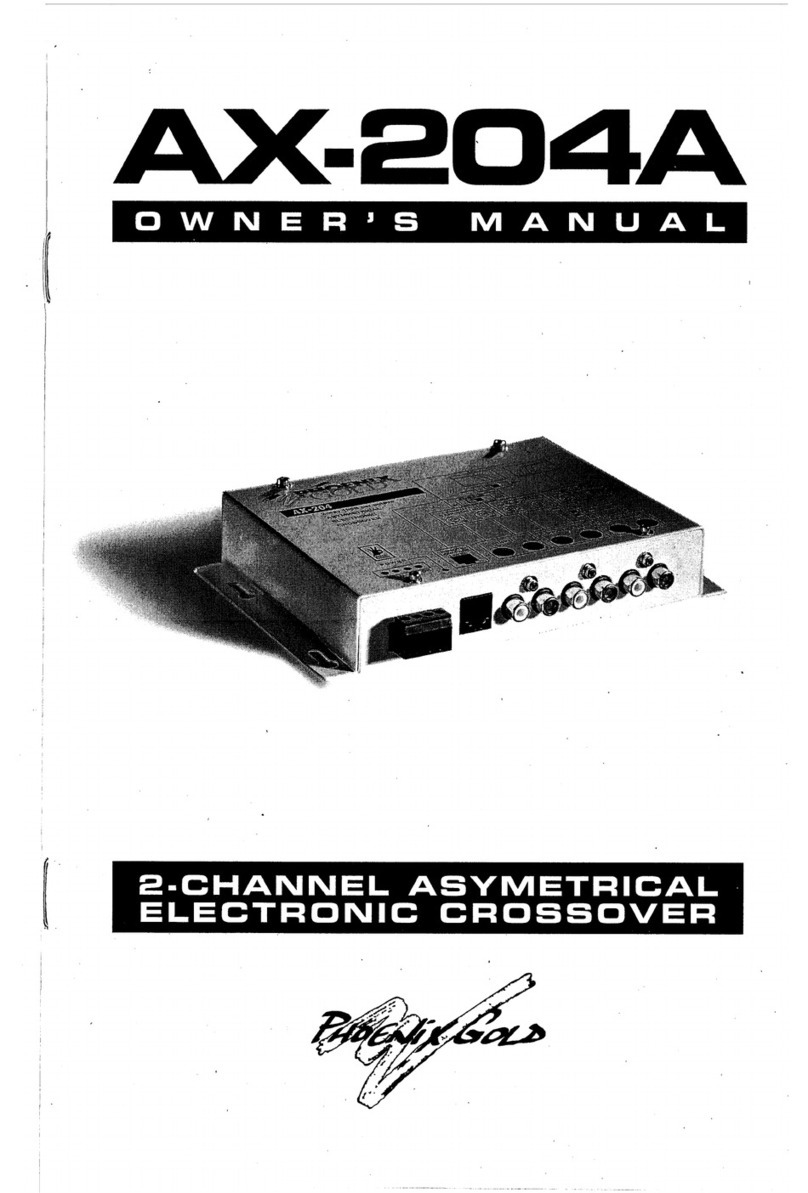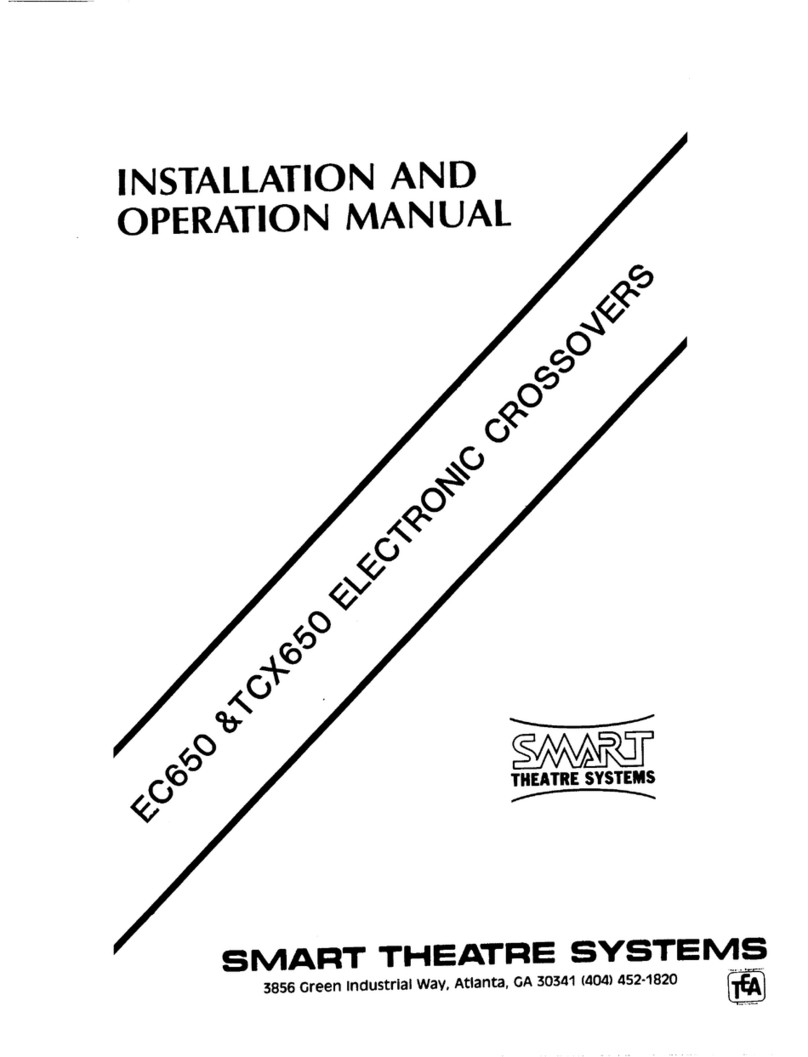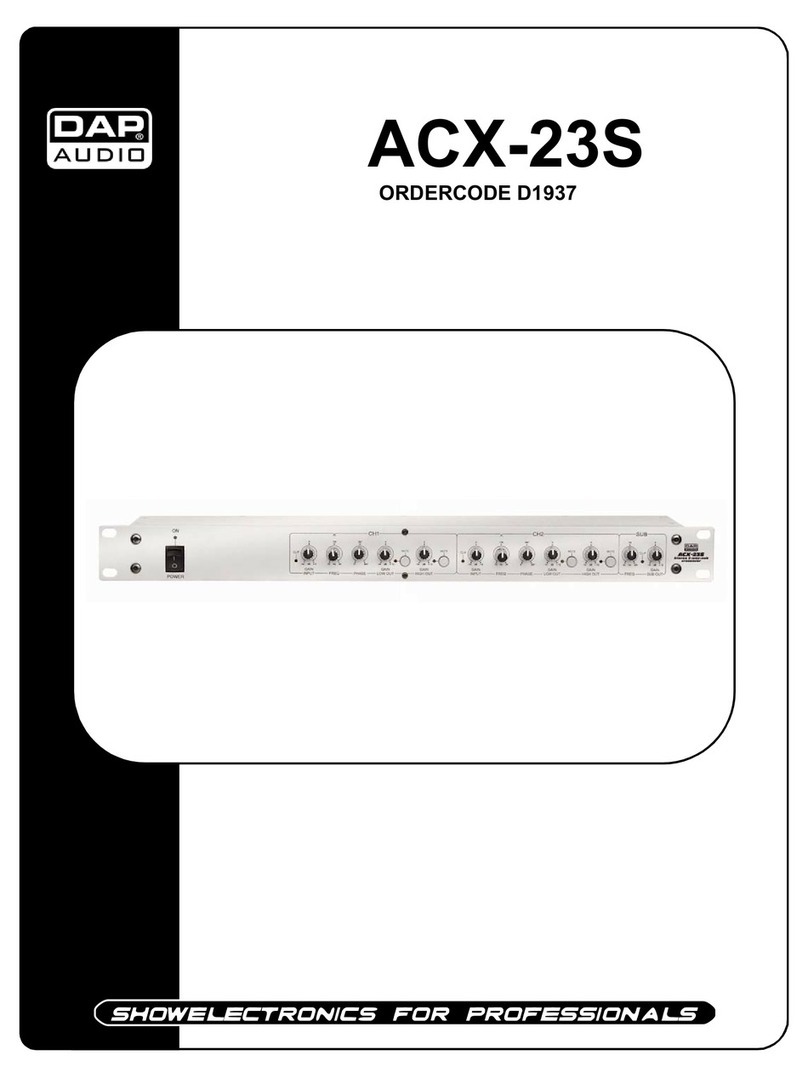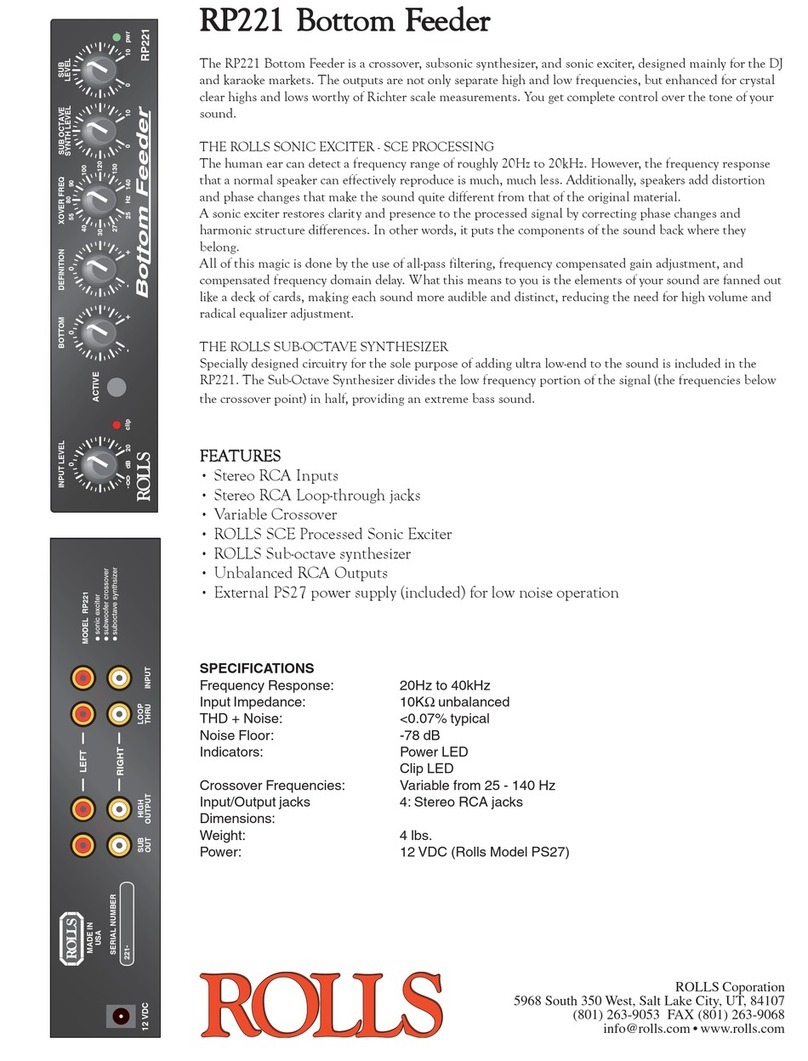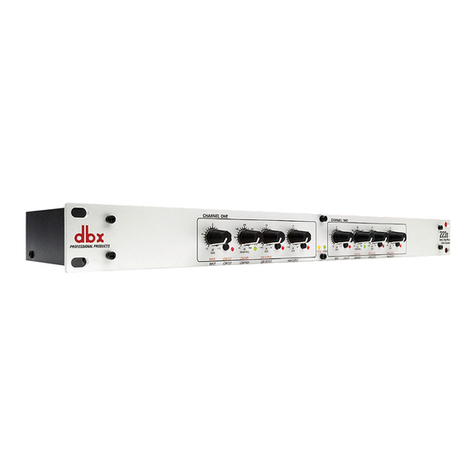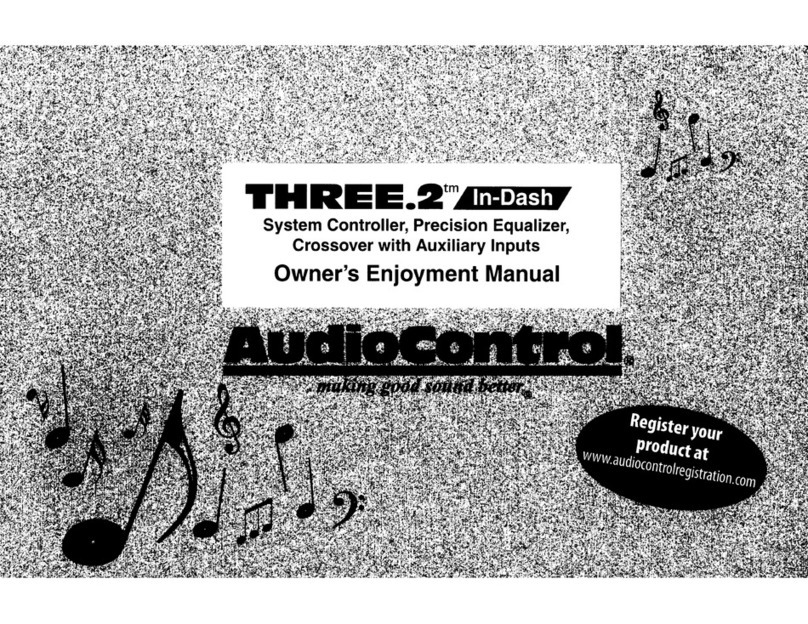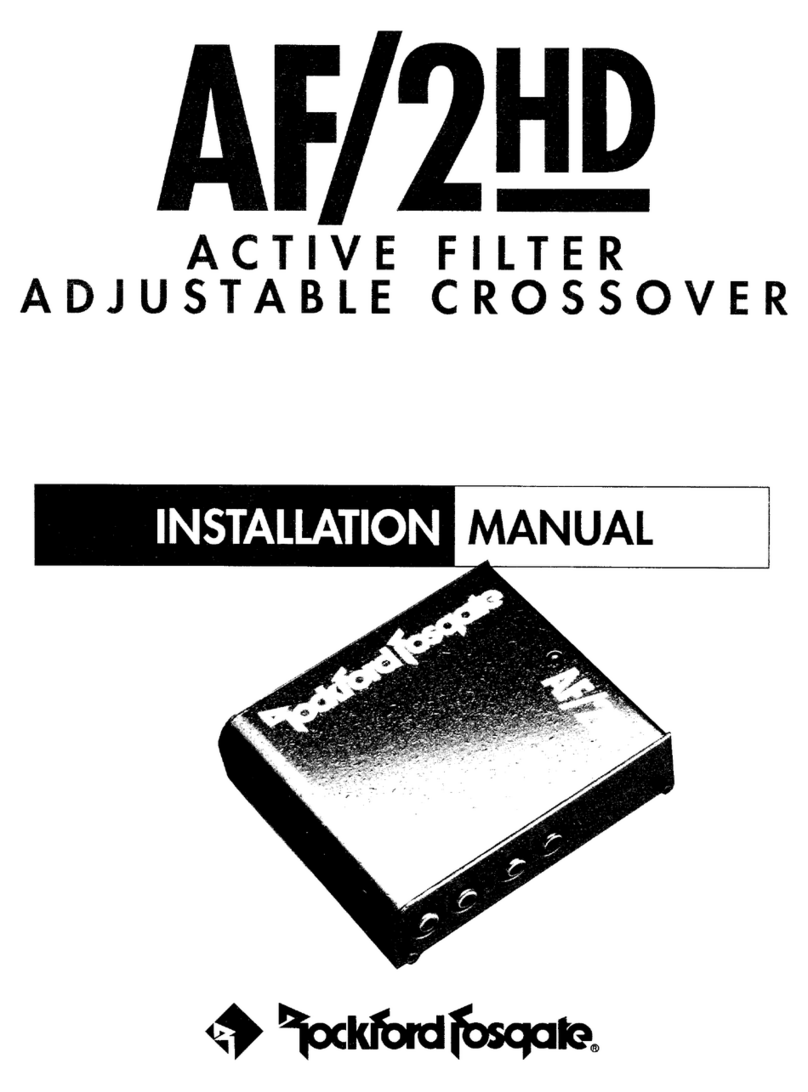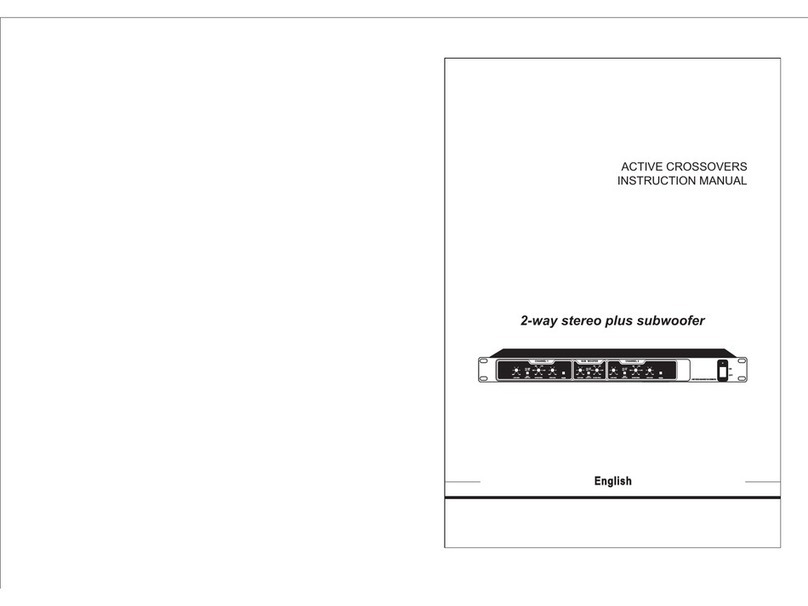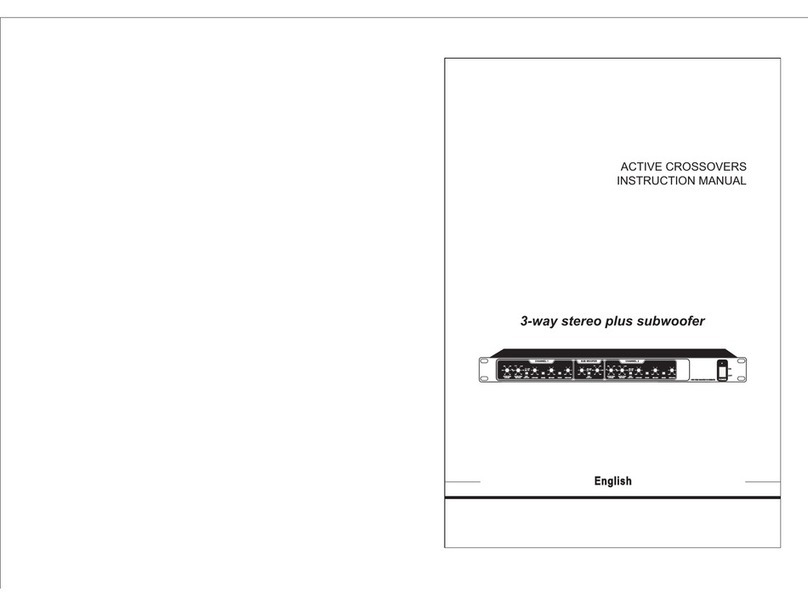Thiel Passive Subwoofer Crossover Technical manual

THIEL
Passive
Subwoofer Crossover
Owner Information

THIEL Passive Subwoofer Crossovers
The THIEL passive subwoofer crossovers allow your
THIEL subwoofer to reproduce both the subwoofer signal
and the low frequency parts of the left/right channel signal
that your main speakers cannot reproduce.
These dedicated passive crossovers match a THIEL
subwoofer to a particular model of THIEL speaker. The
model that your crossover is designed to be used with is
marked on the unit’s front panel. They allow the subwoofer
to augment the main speakers in the precise way that will
enable the combination of main speaker and subwoofer to
produce perfectly balanced and blended sound, with high
output bass capability to below 20 Hz. Two passive
crossovers can be used with two subwoofers to provide
stereo bass reproduction.
These crossovers do not redirect bass energy away from
the main speakers and so the main speakers will not play
any louder than they otherwise would while receiving a
full spectrum signal.
Use of these crossovers provide very good performance
for music and video systems when the main speakers play
sufficiently loud but do not have extended, deep bass
response. With these units the subwoofer will reproduce
the part of the bass signal supplied to the left/right main
speakers that the speakers cannot reproduce. The
combination will reproduce the entire sonic range, to below
20 Hz, and provide performance equivelent to speakers
with the best, most complete bass capabilities.
Hookup
The Crossover receives its input from the output of the
power amplifier driving the main left/right speakers.
While leaving the existing speaker cables in place, connect
additional speaker wires from the power amplifier output
terminals to the respective speaker level input terminals
on the passive crossover unit. Be careful to connect the
positive amplifier outputs to the positive crossover inputs.
The cables used for these connections can be small since no
power is being transferred.
For normal single subwoofer systems
(reproducing the bass for both channels), the
included input jumper must be removed, or damage
to the power amplifier can result.
The crossover’s output is supplied to the subwoofer by
connecting a balanced XLR type interconnect cable from
the crossover unit’s output to the subwoofer’s Normal
Input. If you don’t want the main speakers to receive the
LFE signal, then an additional RCA interconnect cable is
connected from the processor’s subwoofer output jack to
the subwoofer’s LFE Input (see following section).
If two subwoofers are used for stereo subwoofer
operation, the subwoofer for each channel needs to connect
to its own passive crossover which is driven by only the left
or right channel signal. Each crossover must have the
included input terminal shorting jumper in place for the
unused channel’s input.
Thank you for purchasing the THIEL passive subwoofer crossover. You are welcome to contact our Customer
Service department with any questions or for help in setting up your system.
Setting the Surround Processor
The surround processor should be set to deliver the left/
right channel bass to the main speaker channels by telling
it that the main speakers are full-range, or “large”, even if
they are not.
In a video system with a subwoofer output, there are
two methods of supplying the subwoofer channel signal to
the subwoofer.
Method 1 is to tell the processor that you do not have a
subwoofer (even though you do) so that it will mix the
subwoofer signal into the main speaker channels where it
will be directed to the subwoofer by the crossover. The
advantage of this method is that it automatically provides
the correct level balance of the subwoofer channel signal.
The disadvantage of this method is that the main speakers
will receive the subwoofer signal and therefore may not be
able to play as loudly as otherwise. If you try this method
and you do experience speaker overloading when
reproducing demanding bass you should use method 2.
With method 1 you do not use the processor’s subwoofer
output and the subwoofer’s LFE level control should be set
to minimum.
Method 2 is to tell the processor that you do have a
subwoofer. It will then supply the subwoofer signal to the
subwoofer output. You must then connect this output
directly to the subwoofer’s LFE input using an RCA type
unbalanced interconnect cable. The advantage of this
method is that the main speakers will not receive the
demanding subwoofer signal and will play as loudly as
their abilities and the amplifier power will allow. When
this method is used, the subwoofer signal’s level must be
adjusted to balance the main speaker’s loudness.
It is usually more convenient to adjust the subwoofer
level with the processor’s subwoofer level control, and in
this case a good starting point for the subwoofer’s LFE
level control is 110. If the system’s processor cannot control
subwoofer level, then the subwoofer’s level control is used.
The level can be adjusted “by ear” to achieve a pleasing
balance so that the low frequency effects are not too weak
or too strong or, preferably, a sound level meter can be
used in combination with a noise generator in the
processor, if available. Adjust the subwoofer level so that
you get the same sound level reading from the subwoofer
channel as from the left and right channels.

The shown connection from the processor to
the sub is optional; if used, it keeps the LFE
signal from the main speakers but requires a
separate LFE level adjustment. If this
connection is
not
used, tell the processor that
you do not have a subwoofer (even though
you do) and set the subwoofer’s LFE level
control to minimum. And in any case, tell the
processor that the main speakers are large,
even if they are not.
System connections
Input wires are connected from the
main speakers’power amplifier
outputs to these input terminals.
Observe + and –polarity markings.
This shorting strap must be removed if both left and right channel inputs are
used. This shorting strap must be installed across unused channel terminals
if only left or right channel input is used for stereo subwoofer systems.
A balanced XLR type interconnect
cable is connected from this output
to the subwoofer’s normal input.
LEFTRIGHTCENTERL REARRREAR
SUB
Right Bal Input
LeftBal Input
L+L—R—R+
INPUT
OUTPUT
Power Amplifier
for main speakers
Preamp or Processor
Left/Right
outputs
Sub
output
Main Left/Right speakers
Subwoofer
LFELevel
RearWall
Distance
meters
SideWall
Distance
meters
LFEInput
LFEOutput
NormalInput
NormalOutput
TriggerOn
Fuse
Auto
OffOn
Flush2.0
1.5
0.51.0
0
WARNING
TOPREVENTFIREORSHOCKHAZARD
DONOTEXPOSETHISUNITTORAINORMOISTURE
NOUSERSERVICEABLEPARTSINSIDE
REFERSERVICINGTOQUALIFIEDPERSONEL
REPLACEFUSEONLYWITHSAMERATING
ATTENTION
POUREVITERTORURISQUESDEFEUOUDECHOCELECTRIQUE
N’EXPOSEZPASCETAPPAREILAL’HUMIDITE
AUCUNCOMPOSANTNEPEUTETREREMPLACEPARL’UTILISATEUR
VEULLEZCONTACTERLESERVICEAPRESVENTEAGREE
CAUTION
RISKOF ELECTRIC SHOCK
DONOT OPEN
AVIS: RISQUE DE CHOC ELECTRIQUE - NE PAS OUVRIR
!
THIEL
SmartSub
™
PatentsPending
Model
SerN
o
Voltage
THIELAudio¥1026NandinoBoulevard¥Lexington,Kentucky¥USA¥www.thielaudio.com
On
120
80
90100
110
70
02.5
2.0
1.01.5
0.5
120v10A
240v5A
Speakerlevel Input
L+ L—R —R + Outputto subwoofer
Shortingstrap MUST be removed when both channels are used.
Whenonly left or right channel input is used, shorting strap
mustbe connected between the unused terminals.
Passive Crossover
LFE input
Normal input
Speakerlevel Input
L+ L—R—R+ Output to subwoofer
ShortingstrapMUSTberemovedwhenboth channels areused.
Whenonly left orright channel input is used, shortingstrap
mustbeconnectedbetweentheunusedterminals.

THIEL
1026 Nandino Blvd., Lexington, KY 40511
Tel: 859-254-9427 •Fax: 859-254-0075 •Email: [email protected] •www.thielaudio.com
2/03
Other Thiel Crossover manuals

